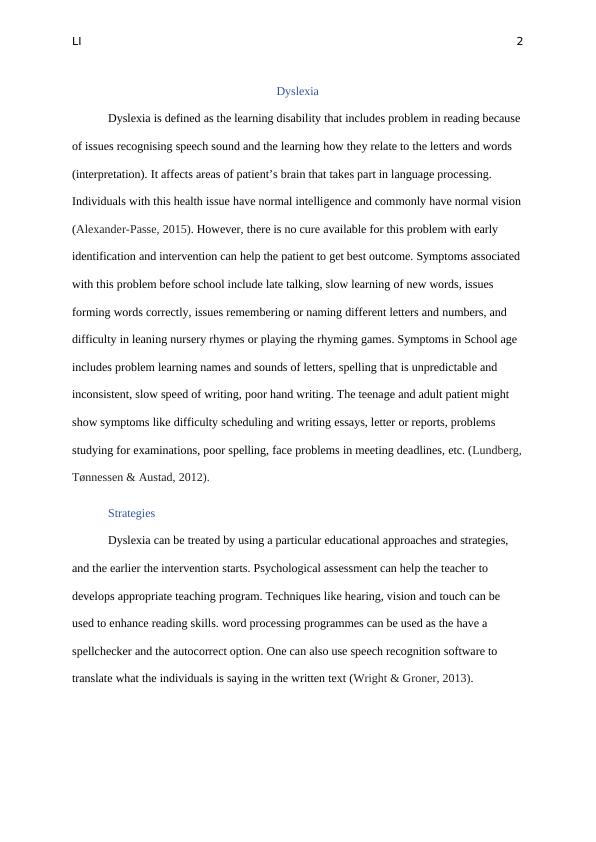Dyslexia and Dyscalculia Strategies
Added on 2022-08-16
6 Pages1236 Words17 Views
End of preview
Want to access all the pages? Upload your documents or become a member.
Understanding Dyslexia: Causes, Symptoms, and Impacts
|7
|665
|163
Supporting Children with Dyslexia: Strategies and Personalized Support Plan
|3
|1044
|479
Dyslexia: Sign, Symptoms, and Cure
|11
|2214
|282
Special Education Needs - Assignment
|11
|3125
|305
Effectiveness of Instructional Activities for Improving Reading Skills of Dyslexic Students
|7
|1488
|455
Applied Research Project: Dyslexia
|14
|3871
|34



